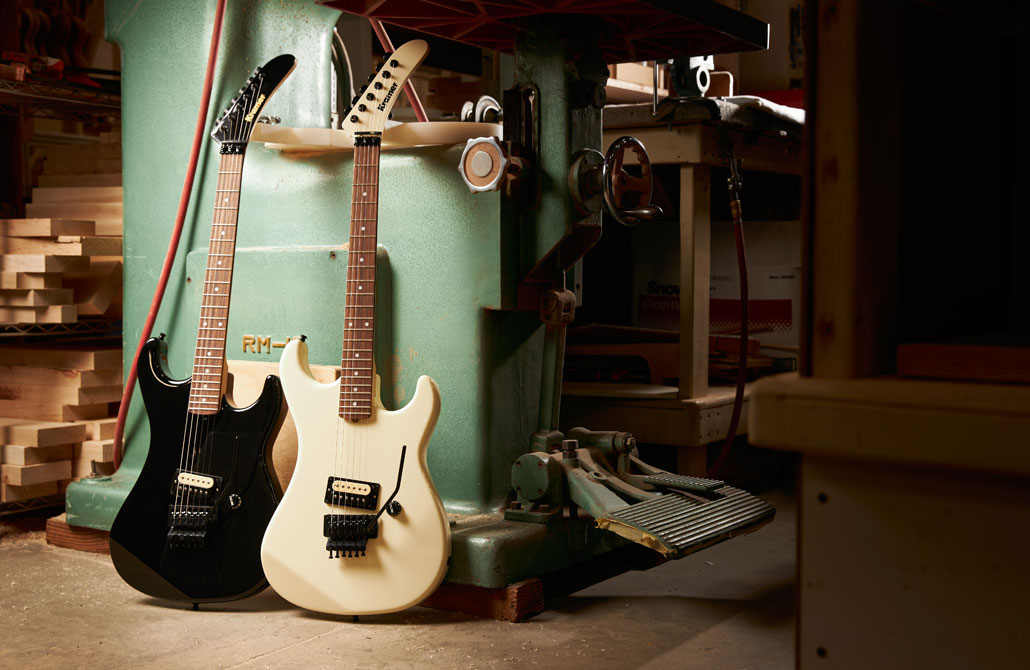Bozos need not apply
Very few guitars can claim to have changed music history, but the new 1983 Kramer Baretta Reissue is a painstaking recreation of an instrument that ushered in a new era of fretboard pyrotechnics and redrew the landscape of popular music in vivid new colors. By the mid-1980s, Kramer would become the world’s most popular guitar brand, and everyone from aspiring shredders to bona fide rock royalty would accept no substitute.
Crafted by the artisans at FujiGen in Japan, the R&D process behind the Kramer 1983 Baretta Reissue began in Nashville, Tennessee, where 3D scans of a “holy grail” original model were carried out to ensure that 2023’s Baretta Reissue is as close to the class of 1983 as is humanly possible.
The end result is an instrument that captures the pioneering spirit of the original and has a powerful simplicity with almost limitless possibilities thanks to its unimpeded upper-fret access, Seymour Duncan ’59 humbucking zebra bridge pickup, single master volume control, and Original Floyd Rose vibrato.

If You Know, You Know
One of the main reasons guitarists of a certain age have such an affinity for the 1983 Kramer Baretta is its association with Edward Van Halen. Eddie featured in the original advertising campaign for the Baretta, and the image from the 1983 print advert became iconic—the greatest rock guitarist on earth, guitar in one hand, cigarette in the other, elbow resting nonchalantly on the guitar case and sporting that famous “No Bozos” t-shirt.
Gibson Brands’ Senior Product Development Engineer Richard Akers and Product Manager Aljon Go gave us more insight about recreating this legendary model. “I acquired this original 1983 Baretta—I think there were less than 250 made in that year,” Richard explains. “It’s considered the holy grail of Kramer production in the 1980s. We took this model, and we did 3D scans on it with our laser-scanning equipment, similar to the way Gibson Custom Shop does, then converted those scans into solid models and provided them to one of the more historic factories in Japan, FujiGen.

“FujiGen have vast experience and are highly respected in the guitar community. We took these designs to them and worked hand-in-hand on developing the model. It took two or three revisions to get everything exactly like we wanted. There’s a lot of nuance in the transitions in areas such as where the back of the neck meets the headstock and the sharper forearm contour—where the nuance lives is in these transitions, so we made sure we captured all that.”
Although at first glance it may seem a relatively simple guitar to recreate, Aljon explains how far down the rabbit hole they went. “I think it’s cool we’re able to use the historical rosewood ’board on these,” he says. “It’s unique and a little bit thinner than one would expect, but it’s vintage correct.
“The side dot placement sort of straddles the rosewood and maple on the side of the neck. Even the back rout—a lot of people won’t even open these up to see how detailed it is, but all of the routs are matched to the original. And even with the COA that comes with it, we went back to the original Kramer owner’s certificate and reproduced the graphic. The devil really is in the details.”
Find out more about the Kramer 1983 Baretta Reissue.


